My journey into the world of salsa began in Medellin, Colombia, and it was during my very first lesson that I was captivated. The vibrant music and the challenge of mastering the instructor’s footwork sparked a passion that has lasted eight years. Throughout this time, dancing weekly across the US and Asia, I’ve developed a particular interest: Dance Shoes For Men.
I know it might sound a bit niche, and yes, I’ve gotten my share of eye-rolls from friends. But I figured, why not bring this passion to a wider audience? Perhaps there are fellow enthusiasts out there on the hunt for the ideal salsa shoe.
My quest has been simple yet driven: to find the best-looking, best-performing, most comfortable, and most versatile dance shoes for men available.
Here’s what I’ve considered in my search for the perfect dance shoe for men:
- Style: What dance shoe for men truly looks great on the dance floor and beyond?
- Performance: Which dance shoe for men actually enhances my dancing?
- Comfort: What dance shoe for men can I wear for hours without causing foot or back pain?
- Versatility: Is there a dance shoe for men that can transition from the salsa club to everyday wear, eliminating the need for an extra pair?
To give you some context, I’m not just any dancer. As a former Division 1 collegiate tennis player, I understand the importance of proper footwear and the impact of past athletic stress on my body, particularly my back and ankles. Years of hard-court tennis have left their mark.
While I wouldn’t consider myself a typical “shoe guy,” my athletic background instilled in me the desire for the best equipment—why should my salsa shoes be any different?
What the Pros Choose for Dance Shoes
My initial research involved observing the footwear choices of top salsa and bachata dancers. This included instructors, respected local dancers, and online research into prominent figures in the dance world.
Ataca and El Tiguere
These bachata icons inspire me with their style, technique, and infectious energy. They often favor eye-catching, shiny loafers, previously Jose Botta and currently Taygras. While these shoes are undeniably stylish, I haven’t quite mustered the confidence to sport such bold footwear on the dance floor—yet.
Daniel
Daniel and Desiree’s bachata videos were my first exposure to the dance online. Back then, I equated sensual bachata with all bachata! A friend humorously described their style as “not dancing, just having sex on the dance floor.” Daniel, with his undeniable charisma and tight pants, often opts for what appear to be jazz shoes. Sometimes, he’s even seen in running shoes or cross-trainers.
Rodolfo Montano Castro
Watching Rodolfo dance is mesmerizing, especially his footwork! He often appears in well-worn sneakers with thin soles. For Dominican-style bachata, a bit of grip is acceptable since the lead doesn’t turn much. Observing Joan Soriano’s music videos reveals many dancers in sneakers or even sandals, highlighting comfort and practicality in some styles of dance.
Terry
Terry takes a minimalist approach—sometimes dancing barefoot! He might use tape for protection or opt for Birkenstocks in casual settings. In more formal situations, he seems to wear Latin or jazz shoes. Terry’s approach underscores that exceptional dancers can shine even with minimal footwear, much like a skilled musician can make any instrument sing.
I once saw Terry and Cecile dance at a salsa festival in Vietnam, and one of my most cherished memories is watching them improvise under the moonlight, lost in the music, without an audience. They are true artists, and while Terry often receives the spotlight, Cecile’s artistry is equally captivating.
Adolpho Indochea
One of my Colombian salsa teachers, a former world salsa champion and an idol of mine, admired Adolpho for his style and choreography. Watching Adolpho dance on YouTube reveals his spectacular precision. Even in social dancing settings, he typically prefers traditional Latin dance shoes for men.
Salsa Teachers & Top Local Dancers
My instructors in Colombia often recommended dance sneakers for practice, citing their comfort and ability to encourage dancing on the balls of the feet while still allowing for spins. However, many top social dancers I’ve observed favor sneakers, loafers, or running shoes for social dancing. Latin or jazz shoes are less common outside of performances or formal events.
It seems comfort often trumps pure performance for social dancers unless they are performing, when dance shoes for men designed for performance might come into play.
In summary, while individual styles vary, some common threads emerge regarding what constitutes great salsa and bachata dance shoes for men:
- Lightweight design
- Clean, snug fit, avoiding bulkiness
- Thin sole for ground feel
- Flexible sole mimicking natural foot movement
- Stylish, whether bold or understated, reflecting the dancer’s personality
- Comfortable for extended wear
Reviewing Different Types of Dance Shoes for Men: Pros and Cons
Dance Sneakers
These were recommended by my first dance studio in Medellin, DanceFree. Dance sneakers offer the lightweight feel and durability of regular sneakers but incorporate a split sole—one part for the ball of the foot and another for the heel. The smooth outsole facilitates easy spinning, and the split sole enhances flexibility.
It took me a while to adjust to the split sole and the emphasis on dancing on the balls of my feet, a common experience for newcomers. These are excellent value practice shoes and suitable for social dancing. However, despite their durability, they aren’t ideal for general “going out.” Wearing them to dinner or a bar beforehand requires extra caution, especially on steps.
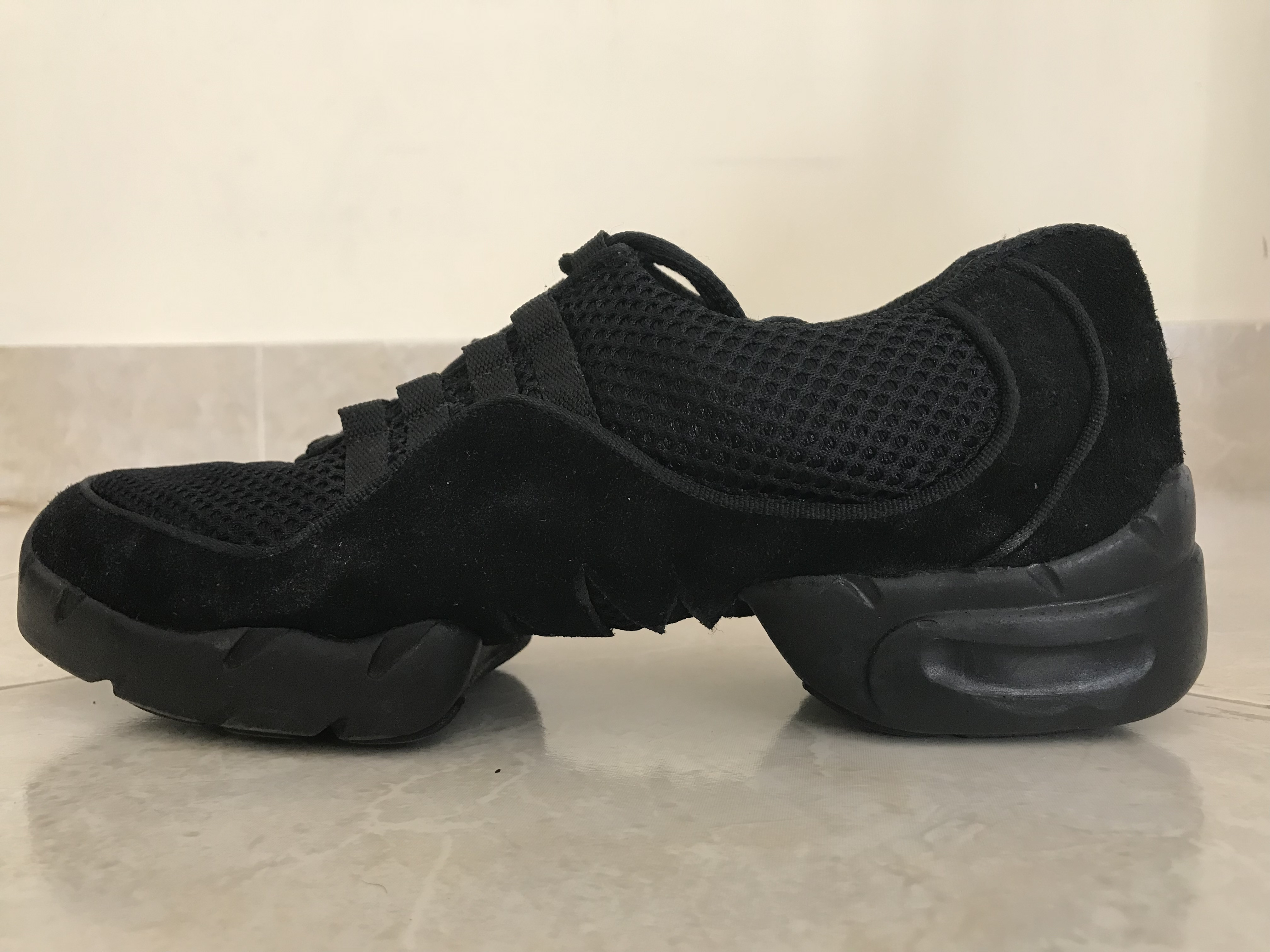 Men’s Dance Sneaker Profile
Men’s Dance Sneaker Profile
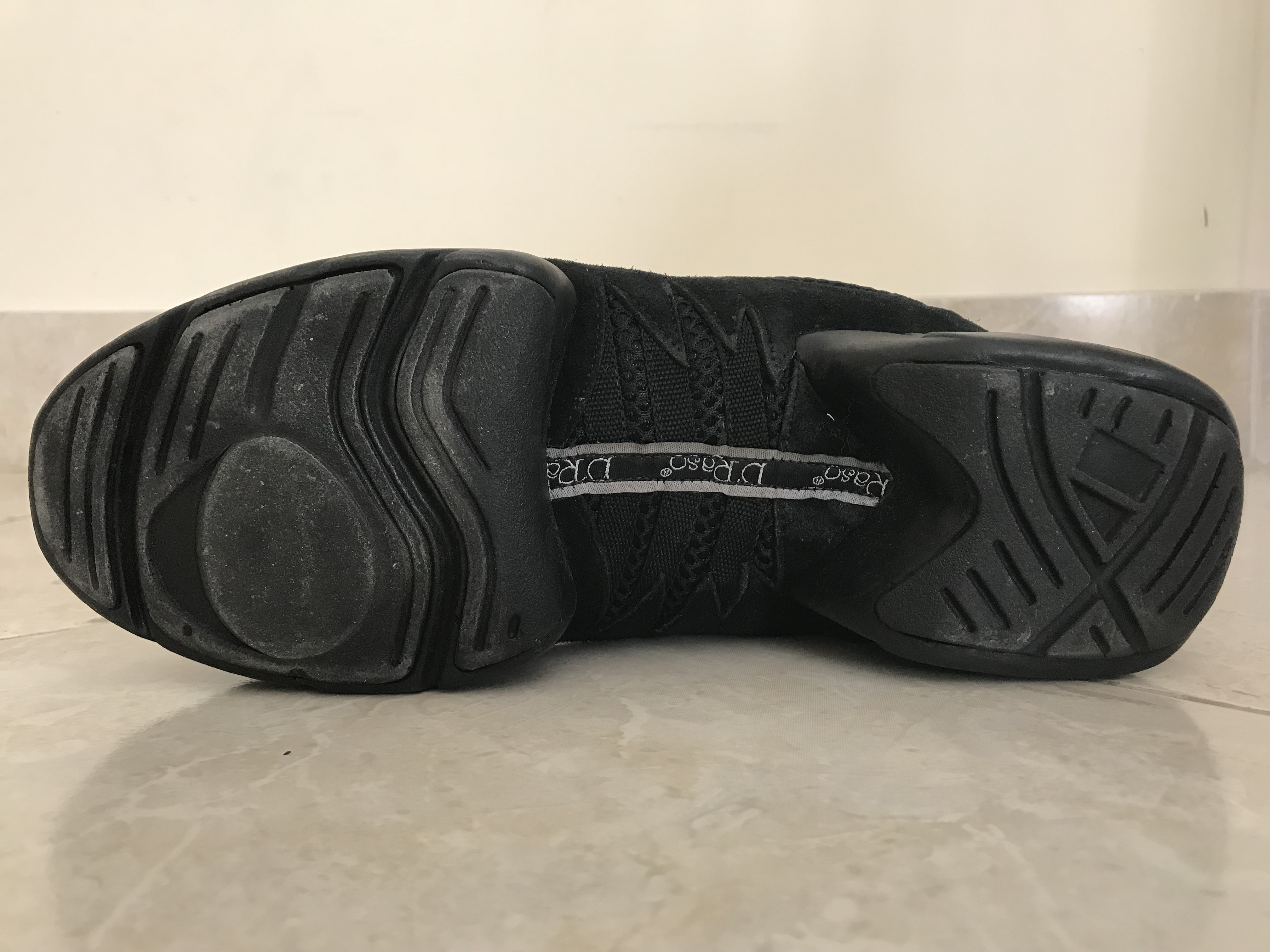 Men’s Dance Sneaker Sole
Men’s Dance Sneaker Sole
Cost: $50-70 USD
Latin Dance Shoes (with Heels)
Now I understand what women endure! I purchased a pair of Latin dance shoes for men in Taiwan. They are undeniably elegant, and the suede soles make spinning effortless, perfecting shines. Instructors often point out that the Latin heel improves dance posture. Wearing these makes a clear statement of serious dedication to dance.
I was eager to try them at a Taipei social. These are definitely shoes you need to carry with you; suede soles aren’t suited for pavement, and the heel isn’t ideal for casual settings.
The downside is comfort. Even after breaking them in, they can be uncomfortable, explaining why women are so relieved to remove heels after dancing. They are best for performances or short bursts of social dancing. Versatility is limited—they are strictly dance floor shoes.
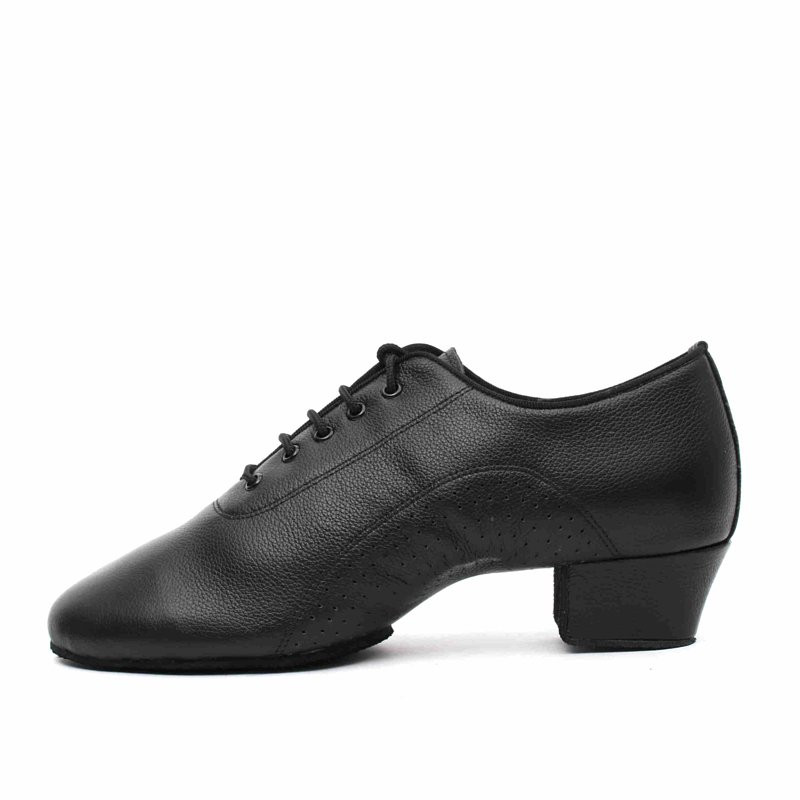 Men’s Latin Dance Shoe Profile
Men’s Latin Dance Shoe Profile
Cost: $60-70 USD
Jazz Shoes
I discovered jazz shoes through a salsa instructor who favored jazz boots. He praised them for being lightweight, affordable, and feeling like sock-shoes. I bought split-sole jazz shoes and agree they are the ultimate practice shoe. They offer the closest sensation to barefoot dancing, enhancing shines, spins, and Dominican bachata. However, they are exclusively for indoor dance floors. Suede soles are delicate and impractical for outdoor wear, especially in wet conditions.
 Men’s Jazz Shoe Profile
Men’s Jazz Shoe Profile
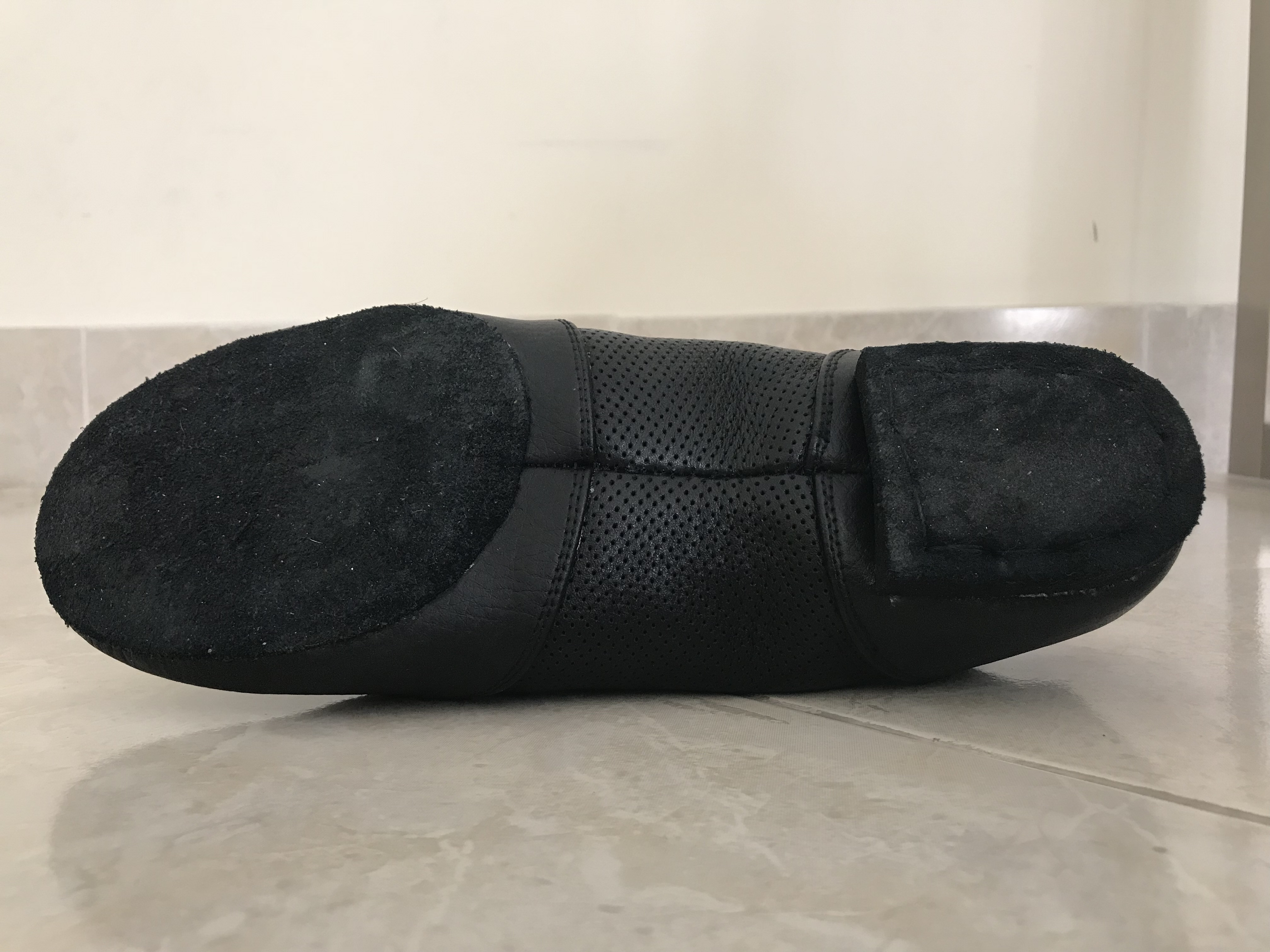 Men’s Jazz Shoe Sole
Men’s Jazz Shoe Sole
Cost: $20-30 USD
Running Shoes
Running shoes excel in comfort, lightness, durability, and support. They are suitable for all-day wear and dancing, with the added appeal of well-known brands. I used Nike Pegasus running shoes for my first six months of salsa. However, spinning is challenging due to their high-grip soles, designed for traction on varied surfaces. This grip can strain ankles and knees during dance spins. The cushioning and comfort come with thicker soles, reducing ground feel, and some models like New Balance and Asics can be bulky.
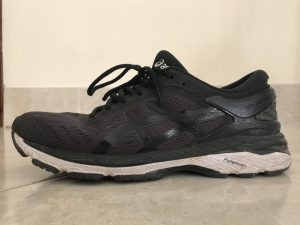 Men’s Running Shoe
Men’s Running Shoe
 Men’s Running Shoe Sole
Men’s Running Shoe Sole
Men’s Running Shoe Nike | Asics
Cost: $60-140 USD
Sneakers
Sneakers are my preferred choice for social dancing. They are lightweight, fit snugly, and offer style versatility for pre- and post-dance outings, eliminating the need for extra shoes. Many feature smooth synthetic soles ideal for spinning on various dance floor surfaces. While Converse felt tiring due to heavier soles, I found a Vietnamese brand with thinner outsoles for $25 a pair, which, despite scuffing easily, were a great value.
The trade-off is less support and often sticky rubber soles, typical of skate, tennis, or basketball shoes. They are also casual, unsuitable for formal occasions. Many dancers recommend Toms for their lightweight and spin-friendly nature.
My online research led me to Taygras, a Brazilian brand initially for soccer and capoeira, now adapted for dance. I ordered a pair. Their soles are incredibly flexible, enhancing floor feel, and they resemble everyday casual shoes, perfect for practice and daily wear.
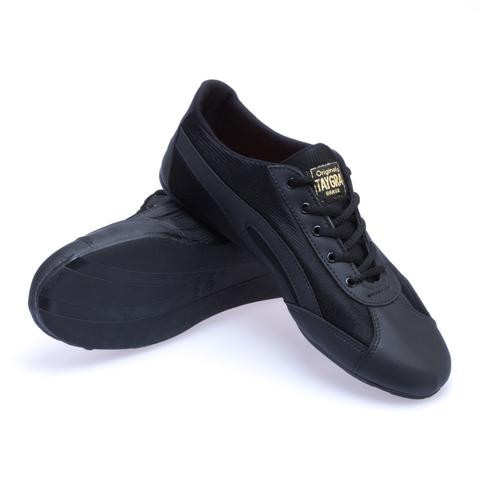 Taygras Sneakers
Taygras Sneakers
Cost: $20-80 USD
Formal Dress Shoes
My search for formal dress shoes suitable for dancing has been extensive. This would ideally solve the problem of needing separate work and dance shoes. Comfortable dress shoes for dancing would be ideal for all-day wear. However, most dress shoes are stiff, heavy, and difficult to dance in, with stiffness increasing with formality. Leather or suede bottoms facilitate spinning, but foot fatigue is a common issue, and stiff leather can cut into ankles.
After trying several pairs, leather moccasins with flexible outsoles came closest to meeting my needs.
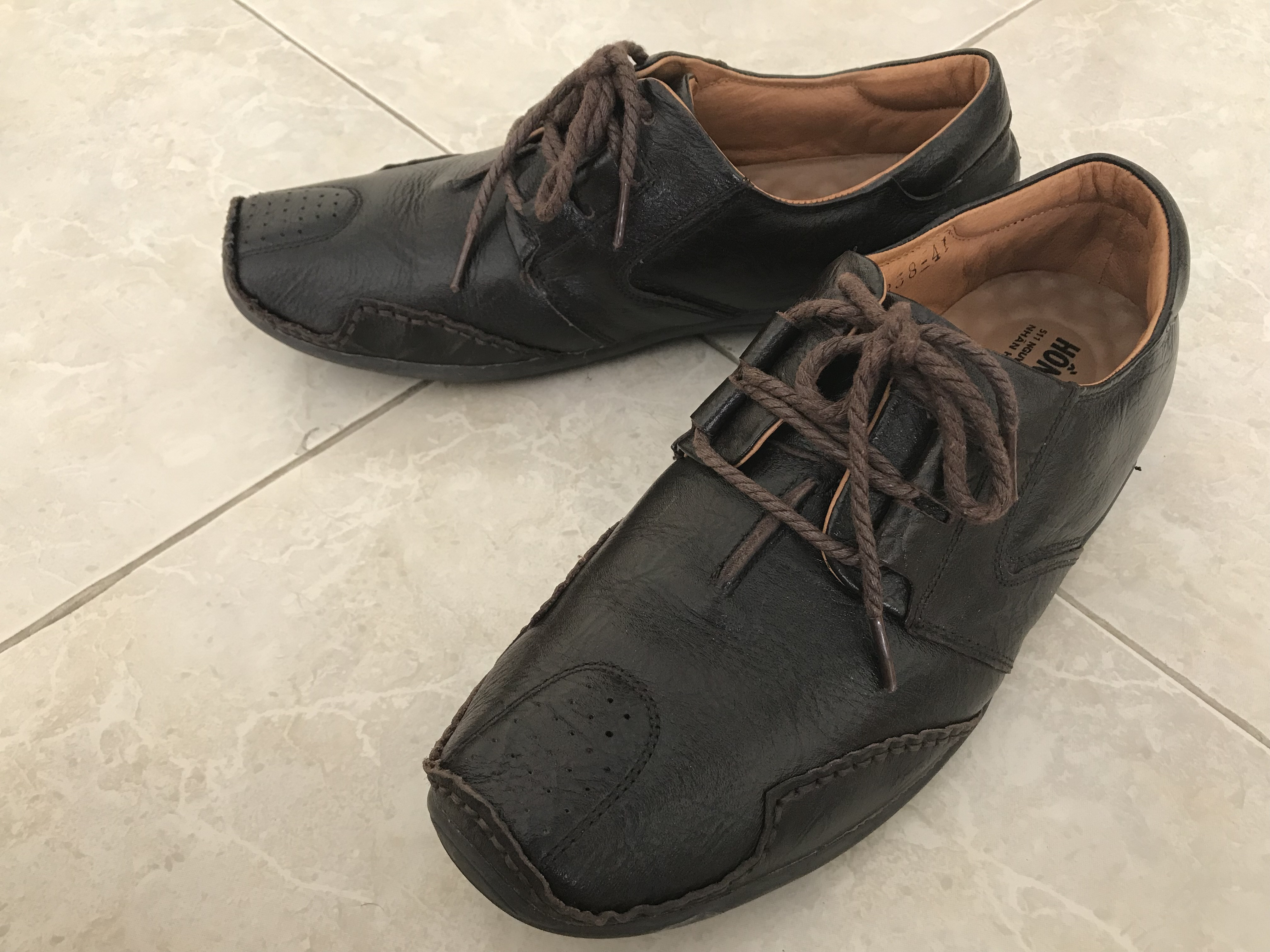 Leather Dress Shoe Pair
Leather Dress Shoe Pair
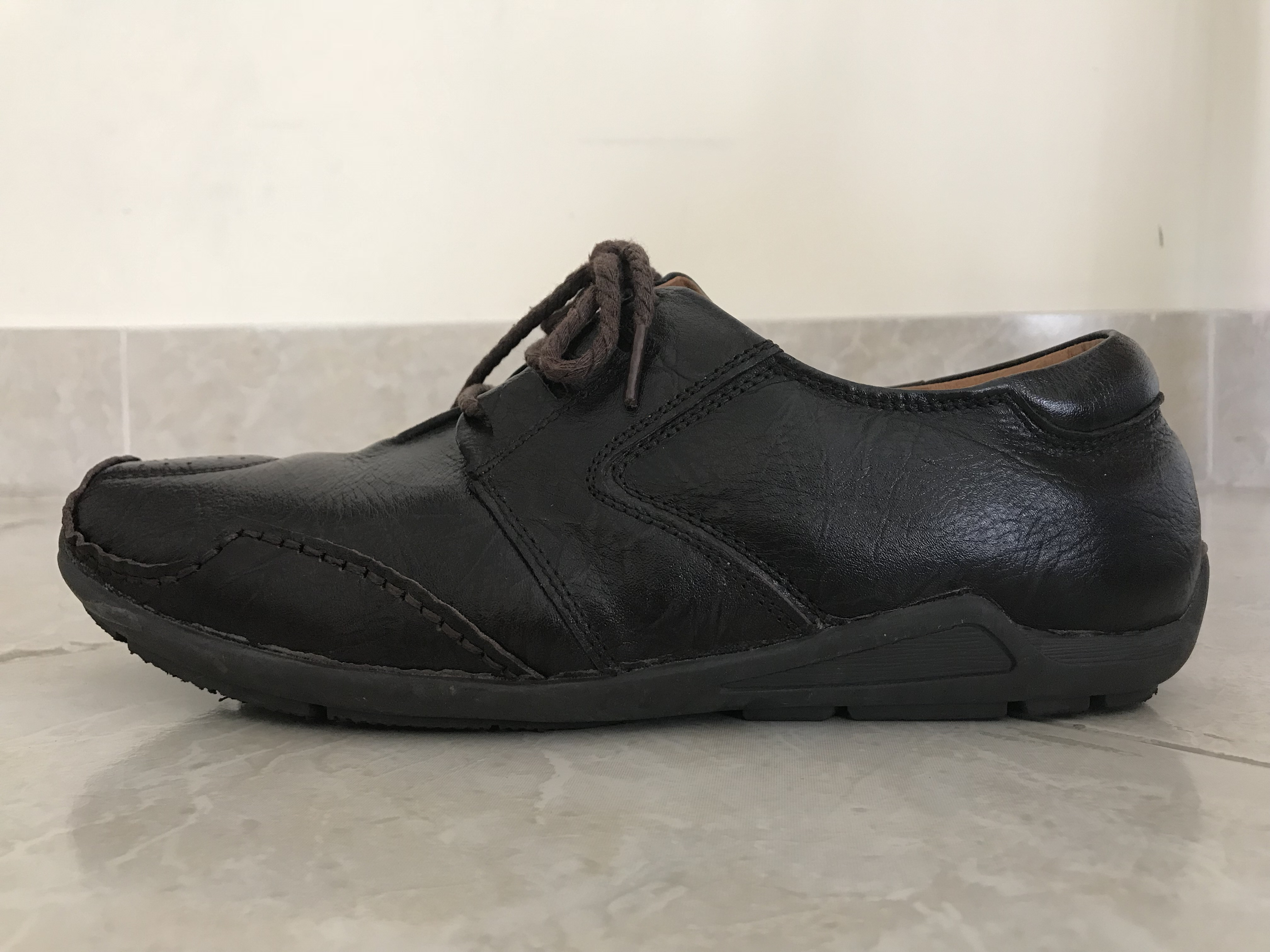 Leather Dress Shoe Profile
Leather Dress Shoe Profile
Online, I discovered dance brands GFranco and Jose Botta, popular among top Latin dancers. Their dressy loafers seem to balance formal style and dance function. While I feel my dance level isn’t yet worthy of such a purchase, Jose Botta, with shoes wearable for both work and dance, is appealing for the future.
Formal Dress Shoes Jose Botta
Cost: $40-140 USD
And the Winning Dance Shoes Are…
For Practice: Jazz Shoes.
Practice typically happens at home or in studios with smooth floors. Jazz shoes, at $20-30, are the most cost-effective. The only inconvenience is carrying them. For those preferring not to carry extra shoes, running shoes or sneakers are alternatives, though less ideal for spin-heavy practice.
For Social Dancing: Sneakers.
Sneakers offer the best versatility. They look good in various settings, eliminating the need for extra shoes. While double spins or intricate footwork might be slightly compromised, they are a reliable choice. For added comfort, running shoes with smooth outsoles are a decent backup.
For Formal Dance Nights: Dress Shoes.
Well-fitting, broken-in dress shoes are your best option. Latin dance shoes for men are also suitable but require carrying an extra pair. Most likely, you already own a pair of leather-bottomed dress shoes.
DIY Dance Shoe Solutions
Here are a couple of DIY tips I’ve encountered:
Hot Dance Tip: Know Your Dance Floor Surfaces
After practicing in jazz shoes for a month, I was eager to use them socially. However, the suede soles were unsuitable for two out of three of my regular dance venues.
The dance floor is as crucial as your shoes. Before investing in salsa dance shoes for men, observe what experienced dancers wear at your usual venues.
In my experience, plastic synthetic outsoles are the most versatile, followed by leather, suede, and rubber. Smooth synthetic outsoles work well on wood, ceramic, vinyl, linoleum, and carpet.
Recommended Salsa Dance Shoes for Men
My friend, a Bachata Champion of Vietnam, recommends Toms for their versatility and performance. I plan to try a pair soon.
I’m particularly excited about my Taygras! They are stylish, with flexible, smooth soles designed for dancers, and I appreciate the company’s ethics.
*Did you know that 20 billion shoes are produced annually, with 90% ending up unrecycled? The leather industry is detrimental to animals, workers, and the environment. I seek durable, minimally harmful, and recyclable shoes. Taygras uses 100% recyclable materials.
Jose Botta also recognized this issue a decade ago and created excellent dance shoes. Ataca and El Tiguere endorse his shoes for functionality and performance. Though pricier, they are on my list for when my dancing justifies the investment!
GFranco offers stylish dance shoes for men, but like Jose Botta, they are in a higher price range. I intend to try them and provide feedback. However, GFranco explicitly states their shoes are not for daily outdoor wear.
My Wishlist for the Perfect Salsa and Bachata Shoe After 8 Years of Dancing
This is what I dream of in a dance shoe for men:
- Stylish and versatile for various outfits
- Lightweight to facilitate footwork and shines
- Snug fit, not bulky
- Thin sole for optimal ground feel and quick reactions
- Design that encourages dancing on the balls of the feet
- Cushion and flexibility for energy return
- Smooth outsole for easy spinning on diverse surfaces
- Versatile outsole suitable for outdoor wear in different weather
- Dual functionality as work and play shoes
Has anyone discovered this holy grail of dance shoes for men? What are your favorite shoes for salsa and bachata? Share your recommendations in the comments below so I can continue this exciting quest…


